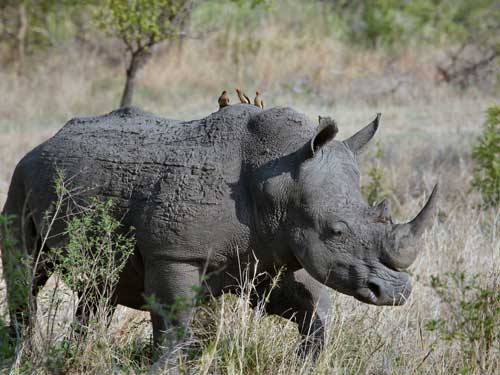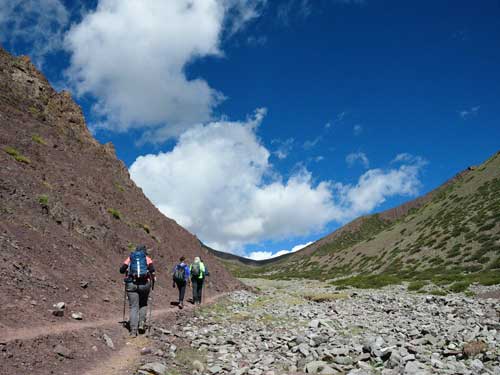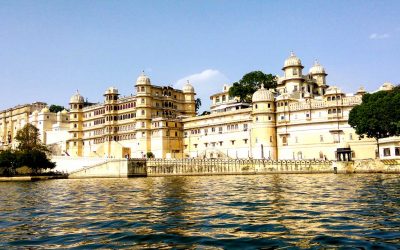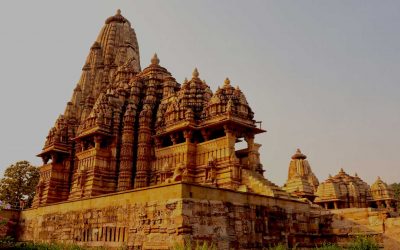Best National Parks in India
In India, national parks are protected places, and the country now has around 110 national parks. India is a vast country with a broad range of species and natural landscapes. The natural splendor of India is quite ethereal and picturesque. While there are over 110 national parks in India now, there were only approximately five in the 1970s. These wildlife reserves have been established to safeguard the richness of wildlife, much of which is indigenous and endangered, from the towering Himalayas and the plains of Central India to the Western Ghats and the world’s biggest mangrove forests in the east. India is home to 70 percent of the world’s tigers and 60 percent of Asian elephants, as well as more than 1360 bird species, 600 reptiles, and 400 mammals, many of which are found nowhere else.

When India was still under British administration, the country’s first national park was established in 1936. The Jim Corbett National Park, originally known as Hailey National Park, is located in the Indian state of Uttarakhand and was the country’s first park. Following the passing of the Wildlife Protection Act in 1972 and the launch of Project Tiger, further sanctuaries and national parks were established. As a result, these initiatives improved the preservation of the country’s national animal, the Royal Bengal tiger. Other endangered animals and birds were later included in the government’s protection effort.
You can go on a safari, go sightseeing, spot wild animals, go bird watching, engage in wildlife photography, and many other things at these parks. There are exotic creatures and birds, such as Asiatic lions, Black Buck, Nilgiri Tahr, Himalayan Monal, Satyr Tragopan, Blue-winged Parakeet, and others, in addition to the famed elephants, tigers, and deer. The following are India’s top eight national parks:
Ranthambore National Park, Rajasthan

This is one of the best tiger reserves in the nation, with “friendly” tigers and a higher possibility of seeing one here than in many other Indian tiger reserves. Ranthambore also features some of the most diverse flora and animals, making it a must-see destination. Ranthambore is a traveler’s paradise, thanks to the Ranthambore National Park, the Ranthambore Fort, and the surrounding hills and valleys. The location is ideal for excursions and sightseeing and is ideal for wildlife photographers. Safari rides, as well as hot Rajasthani choices for shopaholics, add to the thrill. Ranthambore National Park, which covers 392 square kilometers, provides a natural home for a variety of exotic animals.. Built in the 10th century, the Ranthambore Fort towers above the whole National Park. The Fort is a UNESCO World Heritage Site that was built by the Chauhan Dynasty. The Trinetra Ganesh Temple, a magnificent temple dedicated to Lord Ganesha, is located within the fort. Throughout the year, Ganesha enthusiasts visit the temple. In Ranthambore, there are ten safari zones. Although the topography in each zone is distinct, good Tiger sightings have been reported in recent years.
Best time to visit: The ideal time to visit Ranthambore to see tigers are the summer months of April and May as Tigers are easily spotted near the waterholes. Ranthambhore is one park which is open for safaris throughout the year. During the monsoon months (July-September) when the other National Parks in India are closed, Zone 6-10 of Ranthambhore are open for amazing wildlife experience and to spot the Big Cat.
How to get there: Sawai Madhopur is around 11 kilometers from Ranthambore National Park. It has excellent rail and road connections. The nearest airport, Jaipur International Airport, is 160 kilometers distant.
Bandhavgarh National Park, Madhya Pradesh

Bandhavgarh, an ancient castle in Madhya Pradesh’s Umaria District, is said to be as old as the epic Ramayana itself. The fort, which is now not accessible to visitors, is said to have been erected by Lord Ram for his brother, Lakshman. But it isn’t the only mythology about these parts: a mythical white tiger was also rumored to roam the woods. Mohan, the last of the species, is stuffed and on display in the Maharaja of Reva’s palace. These former royal hunting grounds are now a national park with a 716-square-kilometer area of mixed deciduous woods and meadows. The park takes its name from the Bandhavgarh Fort, which sits on 800-meter-high cliffs nearby. Although the fort is now in ruins, the hour-long hike to the fort is worthwhile since it affords excellent views of the surrounding area.The Bandhavgarh National Park is well-known as a tiger reserve, and it is home to the world’s greatest concentration of Bengal tigers. This national park is a must-see for all wildlife aficionados due to the regular sightings of royal tigers. More than 300 bird species and 80 butterfly species flit about, while animals such as tigers, leopards, sloth bears, Indian wolf, caracals, gaurs, langurs, and a variety of deer and antelope species can be seen. Jeep safaris are one of the most popular activities for guests to participate in.Hot air balloon safaris are provided for a bird’s eye perspective of the park.The Bandhavgarh National Park has seen a big cat boom during the Pandemic, with forest officials spotting over 41 tiger cubs at the sanctuary, ranging in age from newborns to one year olds. Four eight to ten-month-old cubs were sighted in Kallavah beat, while 12 of the same age group were seen in Pator, according to the data.
Best time to visit: Bandhavgarh National Park is best visited between November and February, although the park is available to tourists from October to June. Because of the favorable climatic circumstances, the peak season lasts from November through February.
How to get there: Bandhavgarh is accessible by road from all of the country’s main cities. The nearest train station is at Umaria, some 35 kilometers from the park’s entrance. From there, you can take a cab. The nearest airport is at Jabalpur (200 kilometers), and it takes 3 hours to drive from there.
Kanha National Park, Madhya Pradesh

Kanha National Park is the biggest National Park in central India and has been recognized as one of the greatest parks in Asia. It is located in Madhya Pradesh’s central area. The current territory, which spans a 940-kilometer square and is separated into two sanctuaries: Hallon and Banjar, is one of India’s greatest tiger reserves. Since its founding in 1955, the park has actively contributed to the protection of several endangered species. In 1974, the National Park was designated as a Project Tiger Reserve. The Kanha National Park, rich in flora and fauna, is home to one of the rarest deer species, the Barasingha. It is famous for the Barasingha discourse, which was started to conserve animals that were on the point of extinction. The swamp deer has been brought back from extinction thanks to conservation efforts inside the park, and a route within the forest is named after George Schaller, the environmentalist who wrote “The Deer and the Tiger”about his experience. This National Park is one of Asia’s most beautiful wildlife reserves today, thanks to Rudyard Kipling’s novel The Jungle Book, which made it famous across the world. Kanha National Park is well-known for its animal safaris, which draw visitors from around the world. Leopards, wild dogs, wild cats, foxes, sloth bears, hyenas, langurs, wild boars, and jackals are among the park’s other notable inhabitants. This National Park is also home to reptiles such as pythons, cobras, kraits, and other snakes. You may visit the Baigas and Gonds tribal tribes, who are the actual caretakers of the forests, to learn more about their ceremonies, customs, and traditions.
Best time to visit: Kanha National Park is best visited between October and March since temperatures begin to rise after March. The park is only open from the middle of October to the end of June.
How to get there: Kanha National Park does not have a direct air connection. The nearest airport is Jabalpur Airport, which is around 120 kilometers and is 3 hours drive from Kanha National Park.
Tadoba National Park, Maharashtra

The “Tadoba National Park,” also known as the “Tadoba Andhari Tiger Reserve,” is Maharashtra’s oldest and largest national park. It is one of India’s 47 planned tiger reserves. It is located in Maharashtra’s Chandrapur district, roughly 150 kilometers from Nagpur. The tiger reserve covers 1,727 square kilometers and contains the Tadoba National Park, which was established in 1955. The names “Tadoba” or “Taru” are derived from the indigenous tribal people of this region. Rare varieties of flora and animals may be found in this area, calming your entire being. The Tadoba National Park is separated into three forest ranges: the Tadoba north range, the Kolsa south range, and the Morhurli range, which lies between the first two. The ‘Tadoba Lake,’ ‘Kolsa Lake,’ and ‘Tadoba River,’ are three lakes and one river in the park that are filled every monsoon.’ The Tadoba Tiger Reserve is home to a diverse range of vegetation and animals. Tigers, Indian leopards, Sloth bears, Gaur, Nilgai, Dhole, Striped hyenas, Small Indian civets, Jungle Cats, and others are among the animals which can be seen in this park. This park is also flocked by wildlife enthusiasts from all across the globe for regular sightings of its rare Black panther also known as the Ghost of the Forest.
Best time to visit: Tadoba National Park is best visited between October and June. The best time to see tigers is between March and June. Between July and September, the park is closed.
How to get there: Tadoba is easily accessible by road, air, and rail. Tadoba does not have its own railway station or airport; instead, Chandrapur Railway Station is the nearest railway station, while Nagpur’s Dr Babasaheb Ambedkar International Airport is the nearest airport. They have excellent connections to India’s main cities.
Satpura National Park, Madhya Pradesh-

Satpura National Park is one of Central India’s most diversified and attractive national parks, located in the lovely and diverse suburbs of Madhya Pradesh. The sanctuary, which is one of India’s most magnificent tiger reserves, won the TOFT Wildlife Tourism Award for the best visitor-friendly wildlife locations in 2010. Satpura Tiger Reserve, located in the Hoshangabad district of Madhya Pradesh, India, has an area of 202 square miles and is named after the Satpura Hill ranges, or Mahadeo hills. The Satpura National Park, together with the Bori and Pachmarhi sanctuaries, provides roughly 550 square miles of tiger reserve land in India, which is vital to the country’s environment. It was founded in 1981 and has an elevation range of 300 to 1,352 meters. In addition to a diverse range of flora and animals, the Satpura National Park’s Forest enclaves provide refuge for some endangered and vulnerable species. It is here that we will discover tranquil forest, free of safari jeeps, attractive mountainous terrains, deep gorges, rivulets, vast herds of creatures, and excellent birding. It differs from other Indian tiger reserves in that it allows visitors to observe animals in a variety of ways. Jeep safaris, elephant safaris, walking safaris, canoeing, birdwatching, and other activities are available here. The park is excellent for night patrol; often known as evening safari. Most wild animals and birds begin returning to their roosts or resting spots during the twilight hour. Predators, on the other hand, emerge from their hiding places and can be caught in the act. This is the best time to see a leopard or a sloth bear. Keep an eye out for a pair or more of bright eyes hidden among the thickets. If you’re lucky, you could even see the Rusty spotted cat, the world’s smallest wild cat. A canoe ride along the Denwa river might be very relaxing. The Patalkot Valley is also worth a visit. An exciting way to visit the picturesque location of Satpura is to take a two-hour river boat to observe migratory birds, passing through tribal settlements, and passing through the magical, mountainous terrain of Satpura.
Best time to visit: The national park of Satpura is available to tourists from October to June. From October through June, the primary safari zones of Satpura National Park are available for jungle safaris.
How to get there: The nearest airport and Train station which has better connectivity to Satpura National Park is in Bhopal, which is about 200 kilometers away.
Kaziranga National Park, Assam-

As it’s home to the world’s largest population of one-horned rhinos, Kaziranga National Park is one of India’s national treasures in terms of flora and fauna. Its overall area is shared by the districts of Nagaon, Golaghat, and Karbi Anglong, placing it roughly in the center of the state of Assam in North-Eastern India. Kaziranga National Park, located about five hours by car from Guwahati, is the pinnacle of effective animal protection in India. It was designated as a World Heritage Site by UNESCO in 1985. Kaziranga National Park is located on the floodplains of the powerful river Brahmaputra, and luxuriant vegetation covers practically the whole park. This national park is characterized by thick elephant grass, marshlands, and tall tropical broadleaf forests, which get tremendous quantities of rainfall each year, sometimes even exceeding dangerous levels. The one-horned rhino, Asiatic elephants, wild water buffalo, leopards, and Royal Bengal Tigers are among the wildlife that flourish here. Kaziranga National Park is also designated as a Tiger Reserve, with one of the world’s greatest tiger populations. Birds of various species may also be seen in the park. Various species such as the black-nested stork, lesser white-fronted geese, ferruginous duck, and Baer’s pochard duck, to mention a few, may be seen in this renowned migratory site for birds flying down from the north. The great Indian hornbill and wreathed hornbill are two more famous bird families that can be found here. Safaris are accessible both during the day and at night throughout the open tourist season. Elephant rides are popular with tourists, wildlife journalists, and connoisseurs. Hiking is one of the activities that is prohibited here to avoid accidents. At this national park, great care is taken to guarantee that tourism and environmental sustainability coexist.
Best time to visit: From November to April is the best time to visit Kaziranga. The Kaziranga National Park floods throughout the months of June, July, and August because Assam receives a lot of rain during the monsoon and pre-monsoon seasons. It’s no surprise that rhinos like to bathe and stay in the water during these months. The water begins to recede in September and October, and the area is once again available to visitors in November.
How to get there: Kaziranga is well-connected by road, with many airports and railway stations nearby. Furkating is the closest railway station, from which Kaziranga may be reached in under an hour. The Jorhat Airport is the closest airport to Kaziranga, at a distance of 97 kilometers. The road networks in this area are well-developed, making vehicle travel to Kaziranga simple.
Gir National Park, Gujarat-

Gir National Park and Wildlife Sanctuary is the Asiatic Lions’ solitary remaining home. The Sanctuary is located in Talala Gir, Gujarat, and is part of the Kathiawar- Gir dry deciduous forests ecoregion. This 1412-square-kilometer park reigns supreme over the forest. Gir National Park offers you the once-in-a-lifetime opportunity to see a location that plays a critical and defining role in the preservation and survival of a certain species. When these lions were on the verge of extinction owing to hunting, the Nawab of Junagadh took action to save them. According to the official count, there were 411 lions in 2010. There are also around 2375 species of fauna here, including 38 mammalian species, over 300 bird species, 37 reptile species, and over 2000 insect species. Leopard, chausingha, spotted deer, hyena, sambar deer, and chinkara are among the other major animal species found here. Nothing beats an early morning safari in a densely forested region, when a thunderous scream might startle you awake or a glimpse of the golden mane through the trees can send shivers down your spine. There are no other wild cats around to compete for your attention. Leopards, too, are elusive. When you’re in the country of the lions, though, you rarely look anywhere else. Deer, antelopes, gazelles, jackals, and langurs are some of the animals you could see. If you want to spot lions, look for them around drinking holes, where they may be accompanied by lionesses and cubs. Indigenous Maldharis and Siddhis tribes originally lived in the park, but they have since been moved to communities outside the sanctuary. It is feasible to arrange visits to see their villages, temples, and dances; inquire with your tour operator or hotel.
Best time to visit: The winter months of December and March are ideal for visiting Gir National Park. The weather in Gir is nice and cool during this time of year. Every year, from the 16th of June until the 15th of October, the protected area of Gir National Park shuts. Visiting and exploring every nook and corner of this national park during the winter season will be a pleasant experience. Although hot, April and May are considered the finest months for wildlife watching and photography.
How to get there: The Gir National Park is easily accessible by road, train, and air. The Rajkot Airport, about 4-4.5 hours away, is the closest airport to this national park. The nearest train station is Sasan Gir, which is about a 10-minute walk away. In Sasan Gir, which is close to the Gir National Park, there is also a bus terminal.
Hemis National Park, Jammu and Kashmir-

The Hemis National Park is situated at an elevation of 3,300 to 6,000 meters above sea level. The Hemis National Park, which was established in 1981, is also home to six towns with a total population of over 1600 people. Some of these are fantastic camping spots. Trekking and hiking opportunities abound in this national park. The impassable high-altitude mountains of Ladakh are home to the “Ghost of the Mountains,” a master of disguise who blends in with the snow and ice of Hemis National Park. The biggest national park in India, comprising 4400 square kilometers of alpine forests over the Karakoram–West Tibetan Plateau, is home to the rare snow leopard. This Palearctic area is one of our planet’s eight biogeographic realms, with elevations ranging from 12,000 to 20,000 feet. The park, which is named after the historic Hemis Monastery, has the world’s largest density of snow leopards, although tourists are more likely to see bharal (blue sheep), shapu (Ladakhi urial), Great Tibetan Sheep, and Asiatic ibexes. This park has also been home to sixteen additional animal species. Tibetan wolves, red foxes, endangered Eurasian brown bears, Himalayan marmots, and mountain (pale) weasels are only a few of them. This park also shelters over 73 different bird species, including vultures, golden eagles, and Himalayan vultures. Around Hemis National Park, the Rumbak area is the finest site to see animals. Look above to see the Golden Eagle, the Himalayan Griffon Vulture, and a variety of other raptors. Many visitors come to walk, with the Markha Valley Trek being one of the most popular, while professional mountaineers seek to conquer the Stok Kangri Peak (20,000ft) and the Kang Yatse Peak (20,000ft) (21,000ft). There are various chortens and gompas in the park, as well as the 12th-century Hemis Monastery.
Best time to visit: May to September is the best time to visit the Hemis National Park. Winters in this part of the world can be difficult for tourists, despite the fact that it’s a perfect time to see some magnificent creatures “especially the snow leopards.” The optimum time to visit Hemis National Park is between the middle of June and the middle of October. However, you are unlikely to see many larger creatures during this time.
How to get there: Between Leh and Hemis National Park, there are a few public road transportation options. A journey from Leh’s Spituk Village to the park is another option for visitors. Hemis National Park is served by the Kushak Bakula Rimpochee Airport in Leh.
Book Now
Recommended Tour
15 Days Royal Rajasthan with Tigers & Leopards
Rajasthan is known as land of the grandeur forts & palaces. It is considered to be one of the most rustic yet romantic places on earth. Incredible cities like Udaipur, Jaipur, Jodhpur, are all full of history, packed with fascinating sites…
5 Days Tadoba Wildlife Experience
The Tadoba National Park” , which is Maharashtra’s oldest and largest national park, is one of India’s 47 project tiger reserves. It is located in Maharashtra’s Chandrapur district, roughly 150 kilometres from Nagpur city…
19 Days Tigers, Temples And Architecture
Journey through the heart of tiger country in search of this majestic big cat, traveling to some of the best national parks in India for wildlife encounters. You visit Ranthambhore, Pench, Bandhavgarh and Kanha National Parks…






0 Comments